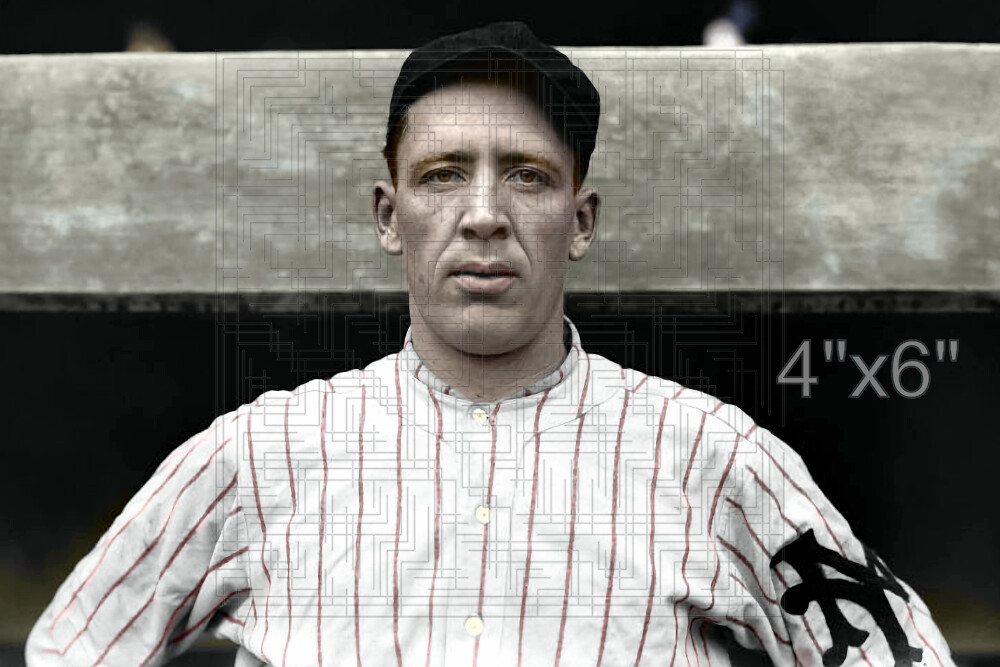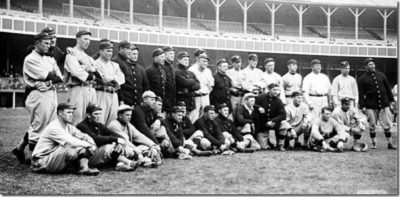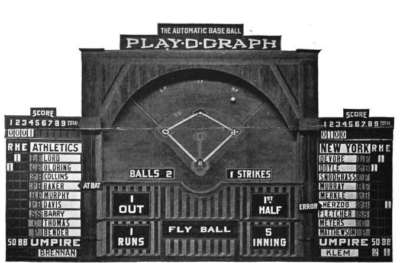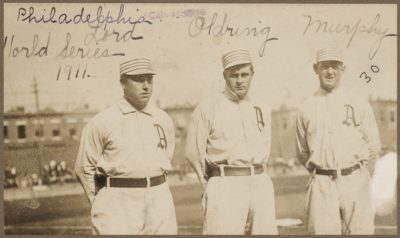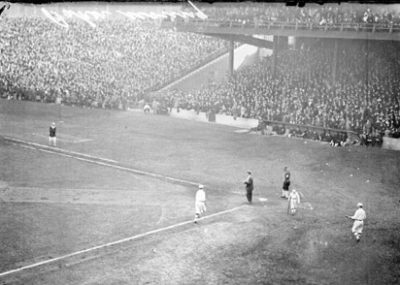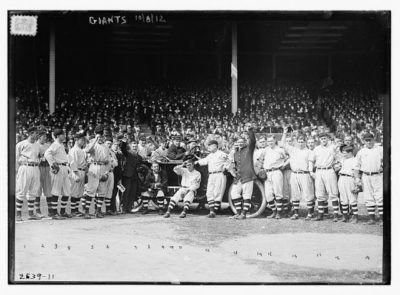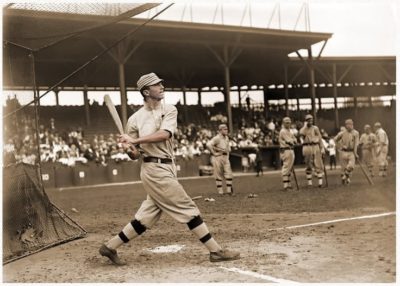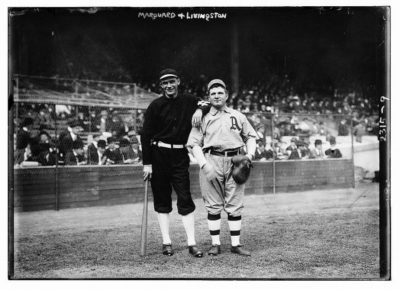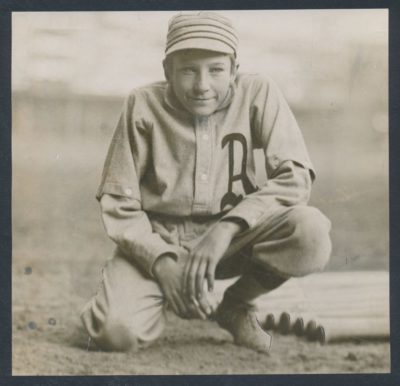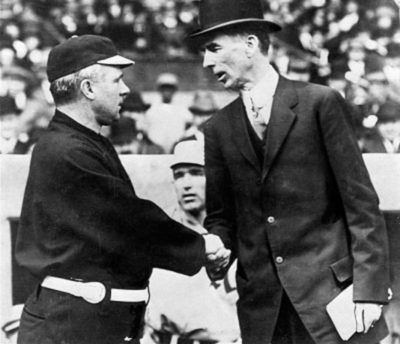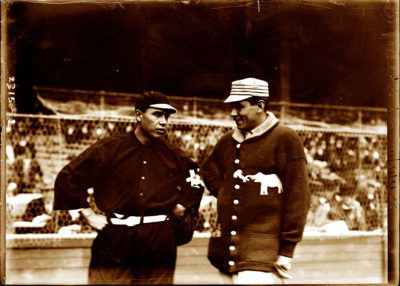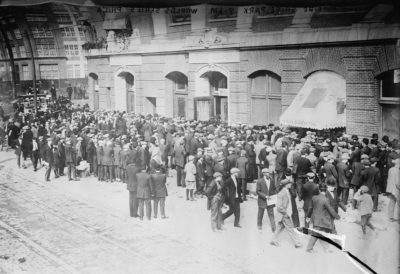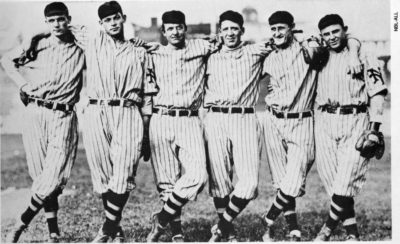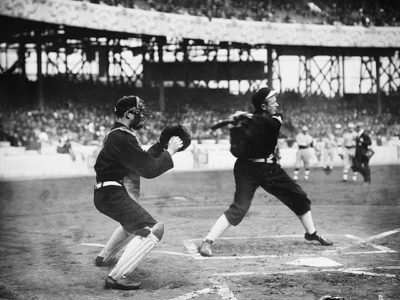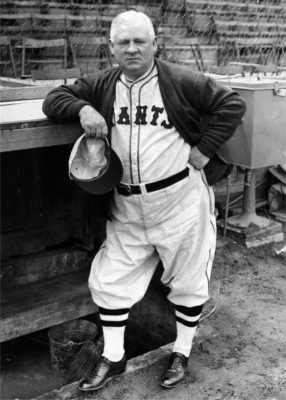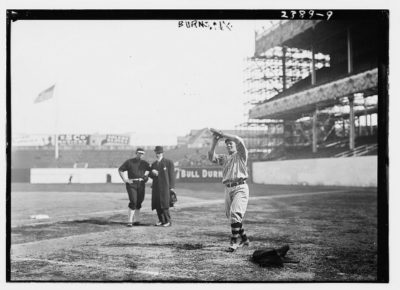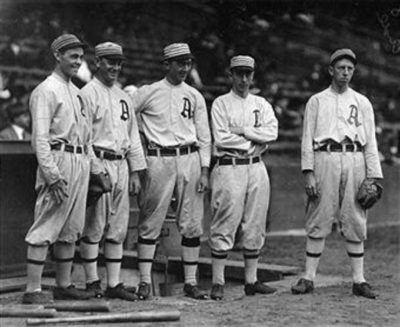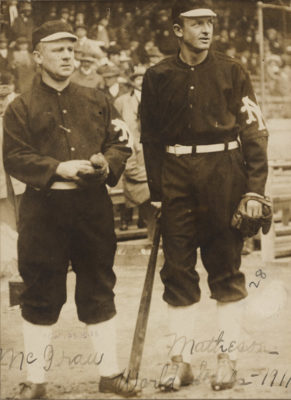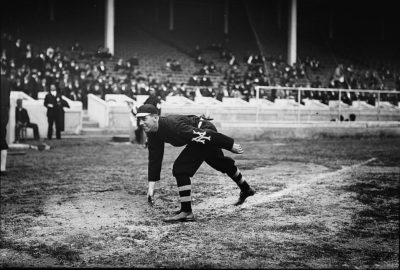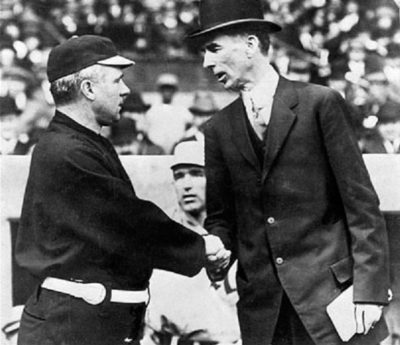Baseball History Comes Alive Now Ranked #2 by Feedspot Among All Internet Baseball History Websites and Blogs!
Guest Submissions from Our Readers Always Welcome!
Scroll Down to Read Today’s Essay
Subscribe to Baseball History Comes Alive for automatic updates. As a Free Bonus, you’ll get instant access to my Special Report: Gary’s Handy Dandy World Series Reference Guide!
1911 Giants/A’s World Series Photo Gallery
Click on any image below to see photos in full size and to start Photo Gallery:
Spotlight on Forgotten Stars
Red Ames: The Harvey Haddix of the Deadball Era
“Not a day goes by that somebody doesn’t ask me about that game. I think I got more notoriety from it because I lost.” -Hard luck pitcher Harvey Haddix reflecting on his historic game
I think if Harvey Haddix were alive today, he could take some solace in the fact the he’s not alone on baseball’s all-time list of “hard-luck” pitchers. He’d be pleased to know that Deadball Era pitcher Red Ames is right there with him!

Thanks to my friend, Professor Emeritus of George Washington University, Jarol B. Manheim, for calling my attention to the misfortunes of Deadball Era pitcher, Leon “Red” Ames. Professor Manheim has written an interesting new book, What’s In Ted’s Wallet?, detailing the early twentieth-century baseball card collection discovered in the wallet of young Theodore “Ted” Edison, the son of the great inventor (and baseball enthusiast), Thomas Alva Edison. The cards are from the 1909 T-206 vintage set (“T” stands for tobacco). One of the 61 cards found in the collection was that of Giants’ Deadball Era pitcher, Red Ames.
(Check out the photo gallery with pics from the 1911 Giants/A’s World Series in which Red Ames pitched for the Giants)
I plan on writing a review of Jerry Manheim’s book in the coming days. For those of you who are, like me, fans of the Deadball Era, you’ll find this book to be right up your alley. Some of you may remember Jerry’s previous book, This Never Happened, the Mystery Behind the Death of Christy Mathewson, which I reviewed here on the Baseball History Comes Alive website last Fall.
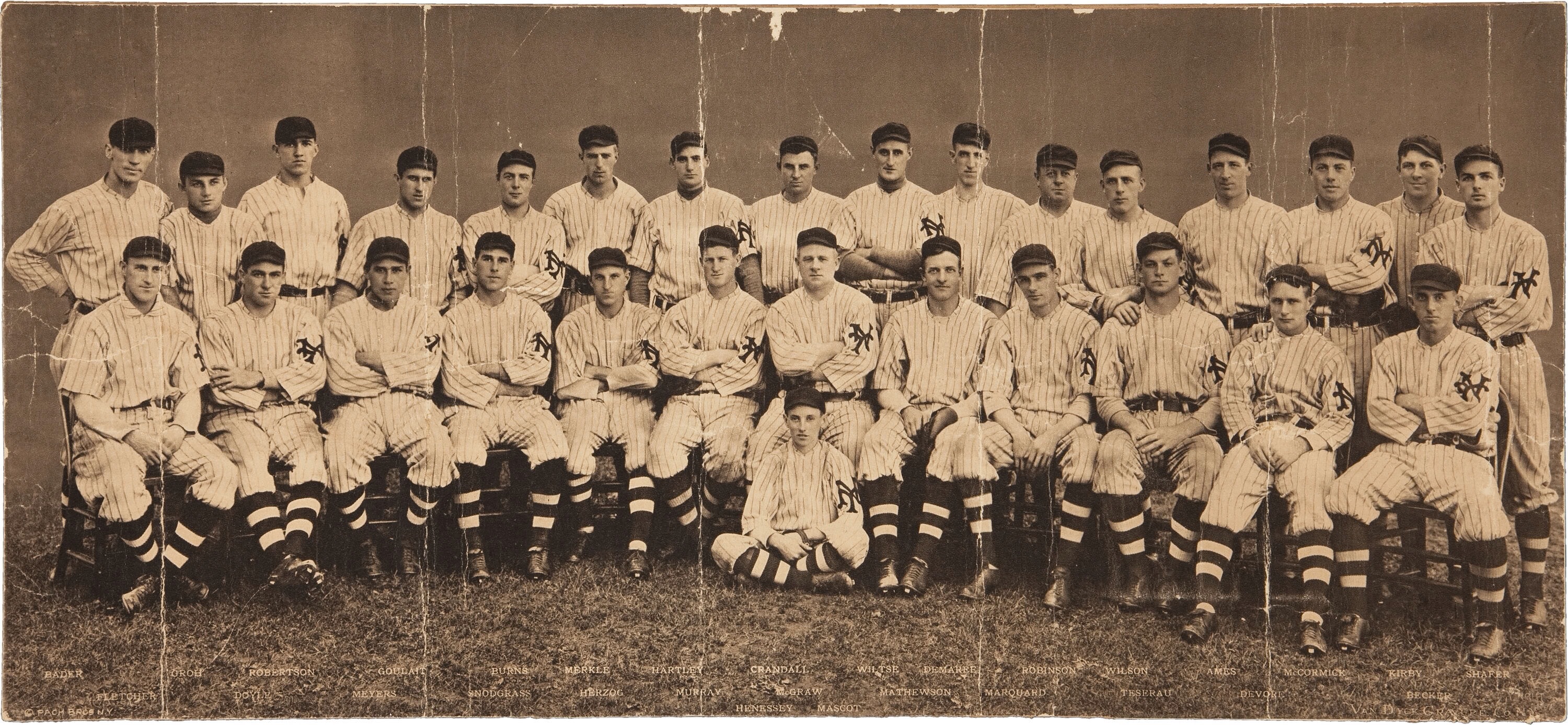
I had been familiar with Red Ames because the Giants teams of the Deadball Era are some of my favorites, especially the pennant-winning years of 1911, ’12, and ’13. Ames was a fine pitcher from that era who played 17 years in the majors (1903-1919) for the Giants, Reds, Cardinals, and Phillies. Over his career, he posted a 183-167 record (.523) with a 2.63 career ERA and 27 shutouts. Jerry Manheim offers this description of Red Ames’ career:

Ames was most notable for his curveball, which Sporting News once described as perhaps the most difficult to catch in professional baseball. He was not, however, known for his pinpoint control. Throughout his career, Ames walked more than 1000 batters, and in 1905, he set an enduring major league record by throwing thirty wild pitches.
What really caught my attention was his well-earned reputation as a hard-luck pitcher. His multiple ill-fated Opening Day mound exploits immediately had me thinking about Harvey Haddix, who, you’ll remember, took a Perfect Game into the thirteenth inning against the Milwaukee Braves on May 26, 1959 – and lost the game! Instead of entering the record books with a rare Perfect Game, Haddix had to settle for a 12 2/3 inning one-hit complete-game loss. To refresh your memory, here’s an excerpt from an essay I wrote about the game:
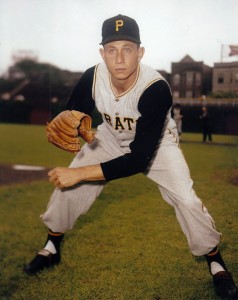
And what about Haddix’s historic effort? Should he get credit for a perfect game? A no-hitter maybe? As it turns out, neither. In 1991, Major League Baseball redefined the definition of a no-hitter to “a game in which a pitcher or pitchers complete a game of nine innings or more without allowing a hit.” The rule had the effect of proclaiming that Adcock’s drive [the hit that drove in the winning run] ended Haddix’s no-hit bid, regardless of the score or the game’s ultimate outcome. Despite his having thrown more perfect innings than anyone in a single game in all of baseball history, Haddix’s game was taken off the list of no-hitters.
So here’s where the comparison to Harvey Haddix comes in. I’d say Ames has to be the most unlucky Opening Day pitcher of all time. On Opening Day 1909, Ames pitched nine hitless innings against Brooklyn and the game was scoreless through twelve innings, but — as fate would have it — Ames lost the game in the thirteenth.

But that’s not all. In the following year, Opening Day 1910, Ames held Boston hitless through seven innings; and again, on Opening Day, 1911, he held the Phillies hitless through six innings and scoreless through eight — but he lost both of these games as well!
So maybe not as dramatic as Harvey Haddix’s ill-fated performance in 1959, Red Ames’ three consecutive Open Day heartbreaking losses give him a legitimate claim to share the title with Haddix of baseball’s most unlucky pitcher!
Gary Livacari
Subscribe to our website, Baseball History Comes Alive with over 1500 fully categorized baseball essays and photo galleries, now surpassing the one million hits mark with over 1,186,000 hits and over 950 subscribers: https://wp.me/P7a04E-2he

